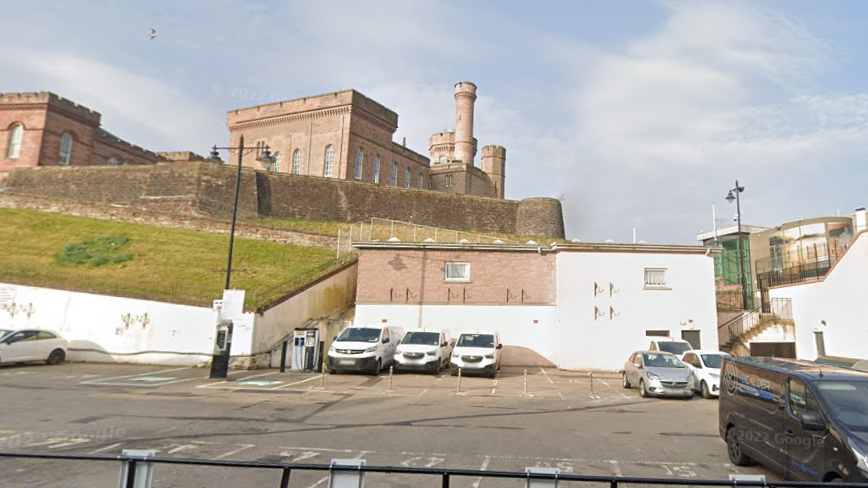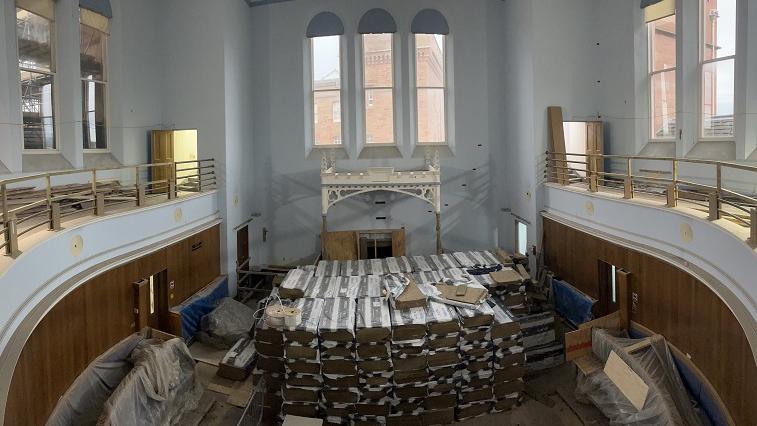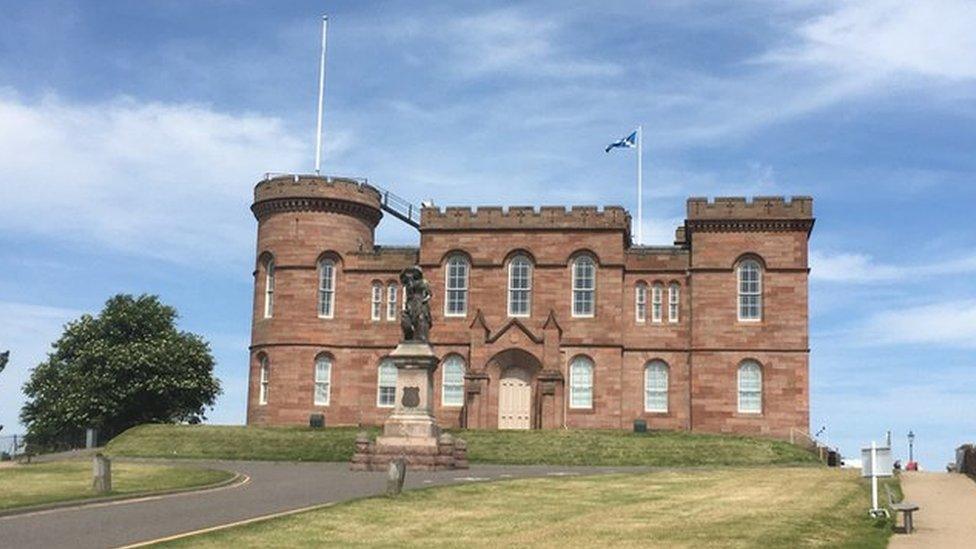Castle waste water heating plan abandoned

Heat recovered from waste water was to be used to warm Inverness Castle
At a glance
Highland Council has had to come up with a new plan to warm Inverness Castle.
The local authority had proposed redeveloping an old public toilet block into a waste water heat recovery centre.
But flow rates of a nearby sewer are not suitable for the project.
Highland Council has now proposed building an air source heat pump system.
- Published
Highland Council has had to change its plan to warm Inverness Castle using a system that would have captured heat from waste water flowing through a nearby sewer.
The local authority secured UK government Levelling Up funding for the project.
It had proposed redeveloping a defunct public toilet block below the castle as a waste water heat recovery centre.
But it has been found that the closest sewer does not to have sufficient flow rates to make the system work.
Highland Council said agreements were in place to change the project to an air source heat pump system instead.

The site of a public toilet block below the castle is to be redeveloped as the new energy centre
Inverness Castle, a former sheriff court, is being transformed into a new tourist destination.
It had been hoped the 19th Century property, along with neighbouring buildings, could be warmed using sewer water system.
According to Scottish Water, external, showers and washing machines can raise waste water temperature to an average of 15C and systems can be put in place to harness this energy.
Highland Council has asked councillors to grant planning permission the revised project.
A spokeswoman said: “After the feasibility study was completed on the proposed system it was found that flow rates from the sewer on Church Street were not sufficient to support the proposals.
"The sewer on the riverside did have sufficient flow rates but was proving technically difficult to locate and install the correct equipment and get the flow and return pipes from the sewer to the energy centre."
She added: "The change in the design of the energy system will still achieve the net carbon targets required.”
Related topics
- Published11 January 2023

- Published29 December 2021
